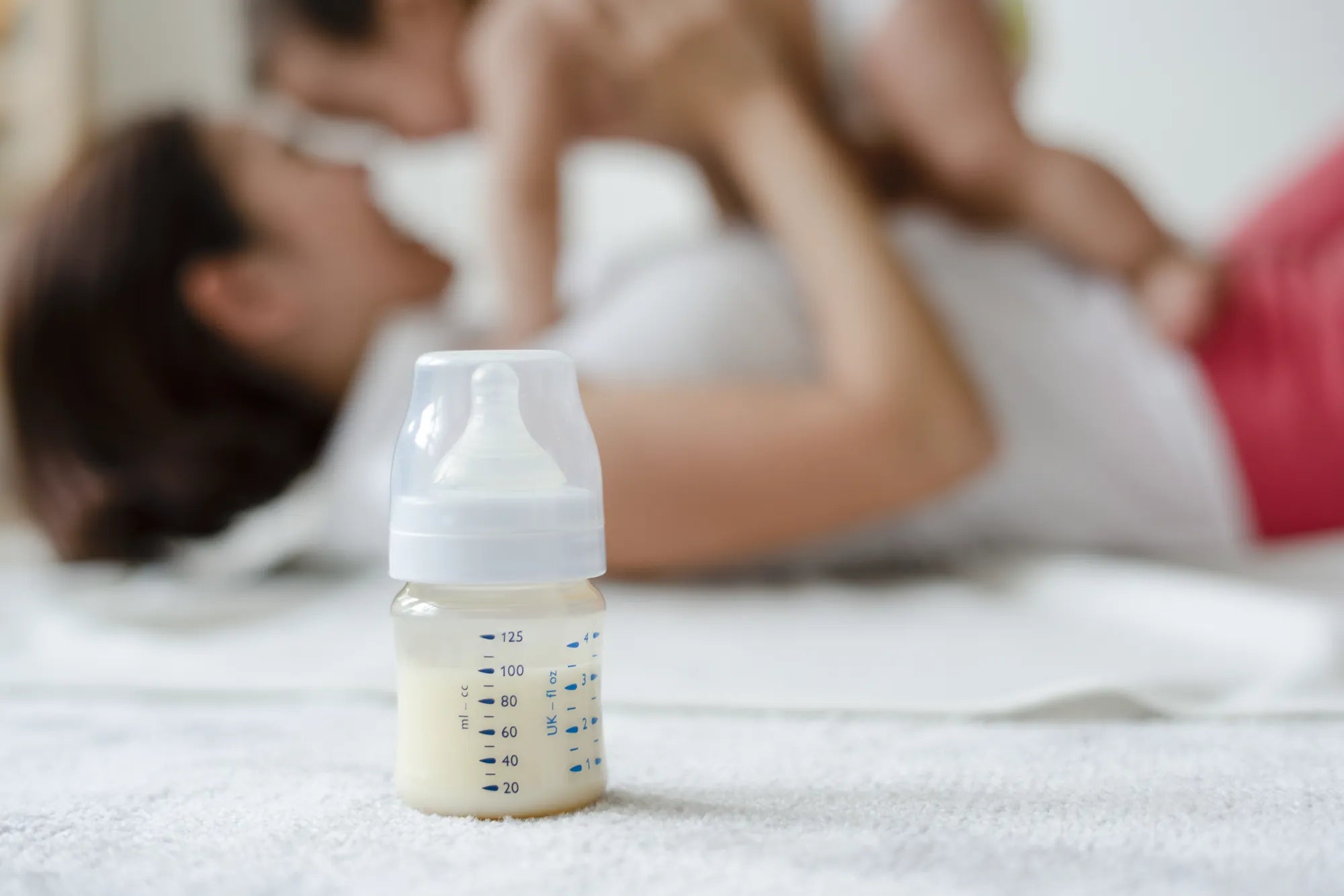Startseite
Pregnancy, Breastfeeding, and Pumping: The Ultimate Guide for Moms
How to Determine Breast Pump Flange Size: A Comprehensive Guide

How to Determine Breast Pump Flange Size: A Comprehensive Guide
Choosing the right breast pump flange size is crucial for a comfortable and effective pumping experience. Many women overlook this step, but an ill-fitting flange can lead to discomfort, reduced milk output, and even damage to breast tissue. This guide will walk you through the process of determining the correct flange size, ensuring that your pumping sessions are as efficient and pain-free as possible.
Understanding the Importance of Flange Size
The flange, also known as the breast shield, is the part of the breast pump that fits over your nipple and areola. Its primary function is to create a seal that allows the pump to express milk effectively. If the flange is too small, it can compress the nipple, causing pain and reducing milk flow. Conversely, if the flange is too large, it can pull in too much of the breast tissue, leading to discomfort and inefficient pumping. Therefore, finding the right flange size is essential for both comfort and milk production.
Measuring Your Nipple Diameter
The first step in determining the correct flange size is to measure the diameter of your nipple. This measurement will serve as the basis for selecting the appropriate flange size. Here's how to do it:
- Wait until your nipple is in a relaxed state, preferably after a feeding or pumping session.
- Using a ruler or a measuring tape, measure the diameter of your nipple at its base. Ensure that you measure only the nipple and not the areola.
- Record the measurement in millimeters, as most flange sizes are listed in this unit.
Once you have your nipple diameter, you can use it as a reference to choose the right flange size. Most manufacturers provide a sizing chart that correlates nipple diameter with the appropriate flange size. If your measurement falls between two sizes, it's generally recommended to choose the larger size for added comfort.
Assessing Fit and Comfort
After selecting a flange size based on your nipple diameter, the next step is to assess the fit and comfort during a pumping session. Here are some key indicators that the flange size is correct:
- Your nipple should move freely within the tunnel of the flange without rubbing against the sides.
- Only a small portion of the areola should be pulled into the flange during pumping.
- You should experience minimal discomfort or pain during and after pumping.
If you notice any of the following issues, it may indicate that the flange size is incorrect:
- Your nipple is rubbing against the sides of the flange, causing pain or redness.
- A significant portion of the areola is being pulled into the flange.
- You experience discomfort, pain, or a decrease in milk output.
If any of these issues arise, it's essential to reassess your flange size and make adjustments as needed. Remember that your nipple size can change over time, especially during the early weeks of breastfeeding, so it's a good idea to periodically check the fit of your flange.
Consulting with a Lactation Consultant
If you're unsure about your measurements or are experiencing persistent discomfort despite trying different flange sizes, it may be helpful to consult with a lactation consultant. These professionals are trained to assist with all aspects of breastfeeding, including breast pump use. A lactation consultant can provide personalized advice, help you measure your nipple diameter accurately, and recommend the best flange size for your needs. They can also offer tips on proper pumping techniques to maximize milk output and minimize discomfort.
Exploring Different Flange Styles
In addition to size, the style of the flange can also impact your pumping experience. Some women find that certain flange shapes or materials are more comfortable than others. For example, some flanges are made from softer, more flexible materials that can reduce discomfort, while others have a more rigid design that may provide a better seal. It's worth experimenting with different styles to find the one that works best for you. Keep in mind that the correct size is still the most critical factor, so be sure to prioritize size over style when making your selection.
Maintaining Your Flange
Once you've found the perfect flange size and style, it's essential to maintain it properly to ensure its longevity and effectiveness. Regular cleaning and inspection can help prevent issues such as cracks, wear, and tear, which can affect the flange's performance. Here are some tips for maintaining your flange:
- Wash the flange after each use with warm, soapy water, and allow it to air dry completely.
- Inspect the flange regularly for signs of wear, such as cracks or discoloration, and replace it if necessary.
- Store the flange in a clean, dry place to prevent contamination.
By taking these steps, you can ensure that your flange remains in good condition and continues to provide a comfortable and effective pumping experience.
Adjusting for Changes Over Time
It's important to remember that your body may change over time, especially during the breastfeeding journey. Factors such as hormonal fluctuations, weight changes, and the natural progression of breastfeeding can all affect your nipple size and shape. As a result, you may need to adjust your flange size periodically to maintain a proper fit. Regularly reassessing your flange size and making necessary adjustments can help prevent discomfort and ensure that you continue to pump efficiently.
Final Thoughts on Flange Size
Determining the correct breast pump flange size is a critical step in ensuring a comfortable and effective pumping experience. By measuring your nipple diameter, assessing fit and comfort, and consulting with a lactation consultant if needed, you can find the perfect flange size for your needs. Additionally, exploring different flange styles and maintaining your flange properly can further enhance your pumping experience. Remember that your body may change over time, so it's essential to periodically reassess your flange size and make adjustments as needed. With the right flange size, you can enjoy a more comfortable and efficient pumping journey, allowing you to provide the best possible nourishment for your baby.
Teilen

